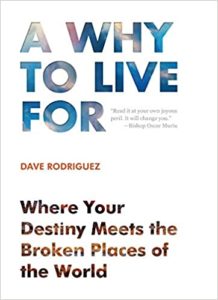Warning. I’m coming in hot.
We are living in the midst of a relationship catastrophe! I’ll get to the data in a minute, but first some anecdotal evidence of the breadth and depth of our current relationship crisis.
A few weeks ago, an acquaintance who, at one point, was surrounded with a ton of people who had committed to “doing life together”, confessed with a shrug that he is now very lonely. When I asked him why, he said, “I dunno…during the pandemic we stopped connecting and then I think we just gave up.”
Recently, a very gregarious, extroverted acquaintance mourned the same thing. “I’ve got no one,” he said, and added, “When it comes to church, I am homeless and I don’t care.”
These are just two of the literally dozens of friends and clients who have dejectedly or matter-of-factly revealed to me just how isolated they feel.
And now the data:
“36% of all Americans—including 61% of young adults and 51% of mothers with young children—feel ‘serious loneliness.’ ” Harvard’s Making Caring Common Project.
“More than half of U.S. adults (58%) are considered lonely.” Cigna News
“One in five millennials have no friends at all. 71 percent of millennials and almost 79 percent of Gen Z respondents report feeling lonely—a significantly greater proportion than other generations.” Scientific American
The result of all this desolation is profound. You don’t have to be an industry researcher to conclude that our well-being is in serious trouble. Lonely people are not happy people. Isolated people are not content people. Lonesome people have pretty serious self-worth issues. And…the lonelier we are, the higher the likelihood we’ll fall physically ill.
“Recent research confirms that loneliness increases the risk of poor health – and even premature death. The reasons for this connection are not always clear, although some studies have found evidence that loneliness is linked to a decrease in some of the chemicals in our bodies that help protect us from injury and illness.” Psychology Today
So, with all that said, how lonely are you?
This is week one of a series of posts in which I will try to help you do a well-being assessment and form a strategy to address your needs and desires. I feel pretty strongly that each of us should pause and take stock of the state of our lives on a regular basis. Am I happy? Am I content? How do I feel about myself? Those three diagnostic questions are a way of asking yourself, “How am I?” I believe well-being can be measured more precisely by examining six key life factors that inform our state of existence. They are – physical health, internal health, focus and order, relationships, finances and purpose/calling.
Let’s begin with a mindful, honest assessment of the state of your relationships. (Now would be a good time to grab a notebook, pad of paper or a journal and a pen.)
Assess the State of your Relationships
Are you lonely?
Who knows you and how well?
If you are in a long-term relationship with a spouse or a partner, is it strong and loving?
If you have children, are your relationships with them strong and loving?
How are your extended family relationships?
Do you have any close friends?
Is there anyone who regularly reaches out to stay in touch?
Do you have anyone, other than family, who remembers the details of your life?
Do you have anyone in your life who believes in you and calls out the best in you?
Are you a part of any small social group that regularly connects for fun or encouragement?
Are you actively engaged in a larger community such as a church, club or fraternal organization?
Do you have a mentor? Are you mentoring anyone?
Are your work relationships healthy?
Dream
Now that you’ve clarified the state of your relationships, what do you wish they could look like? Think best case scenario. What do you want? Imagine yourself rich in relationships. Now, write out a dream…a small paragraph that captures your greatest longings for relationship. Don’t over think this, just emote.
Set a Few Goals
Now, armed with your dream, create a few (no more than three) specific, measurable goals that, if pursued, could very well help your dream become reality. Here are a few examples:
Set a weekly date with my partner/spouse.
Identify 5 friends I want to reconnect with and reach out to every month.
Commit to attending church services every week.
Practice New Habits
With your dream firmly in your mind and your goals in front of you, identify some regular, very practical practices you can commit to over the next three months that will help you achieve your goals. Here are a few examples:
Set a repeating phone alarm to remind you to send a text to a friend.
Put the names of your most important loved ones on post-it notes and stick them on your mirror.
Make it a point to greet every person on your work team every day and ask, “How are you?” along with one follow-up question.
Smile at people.
This is not meant to be an intense personal strategic plan. It is meant to be doable.
Dreams + Goals + Habits
Then you’ll re-set them each season – a simple seasonal well-being plan. Think it might work for you? Next week we’ll add another life factor to analyze and dream about. But this week put your mind to your relationships.
It’s time to feel less lonely.




0 Comments